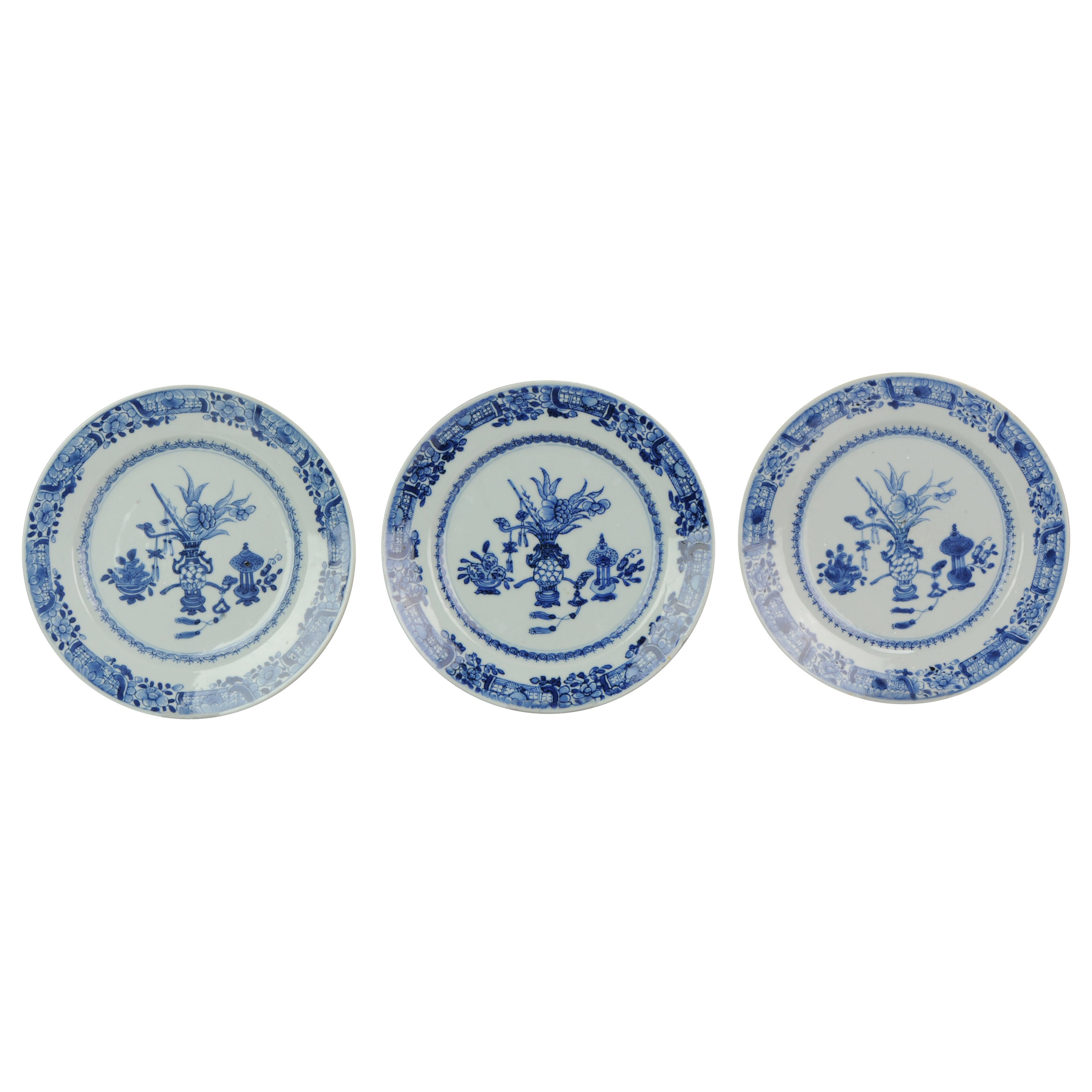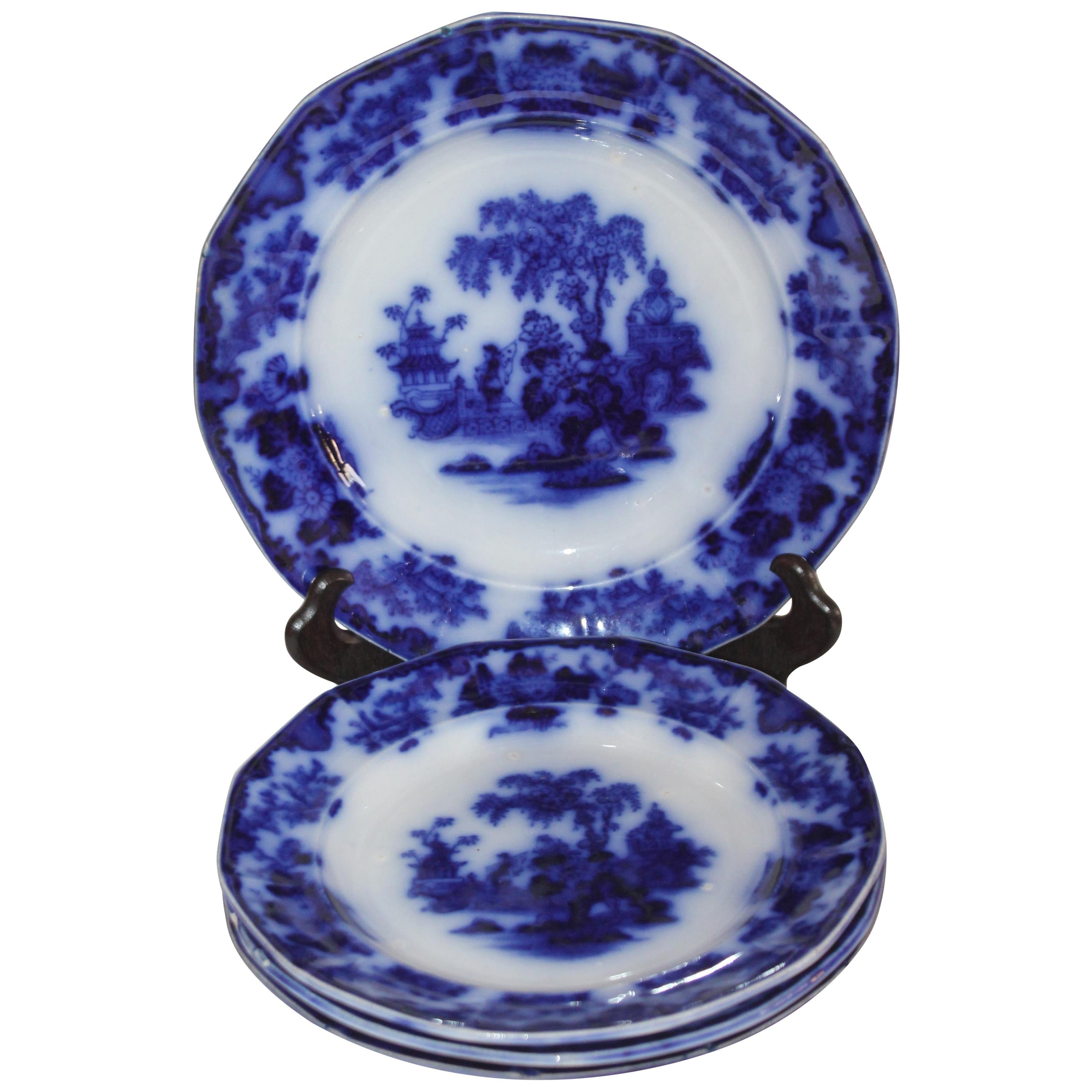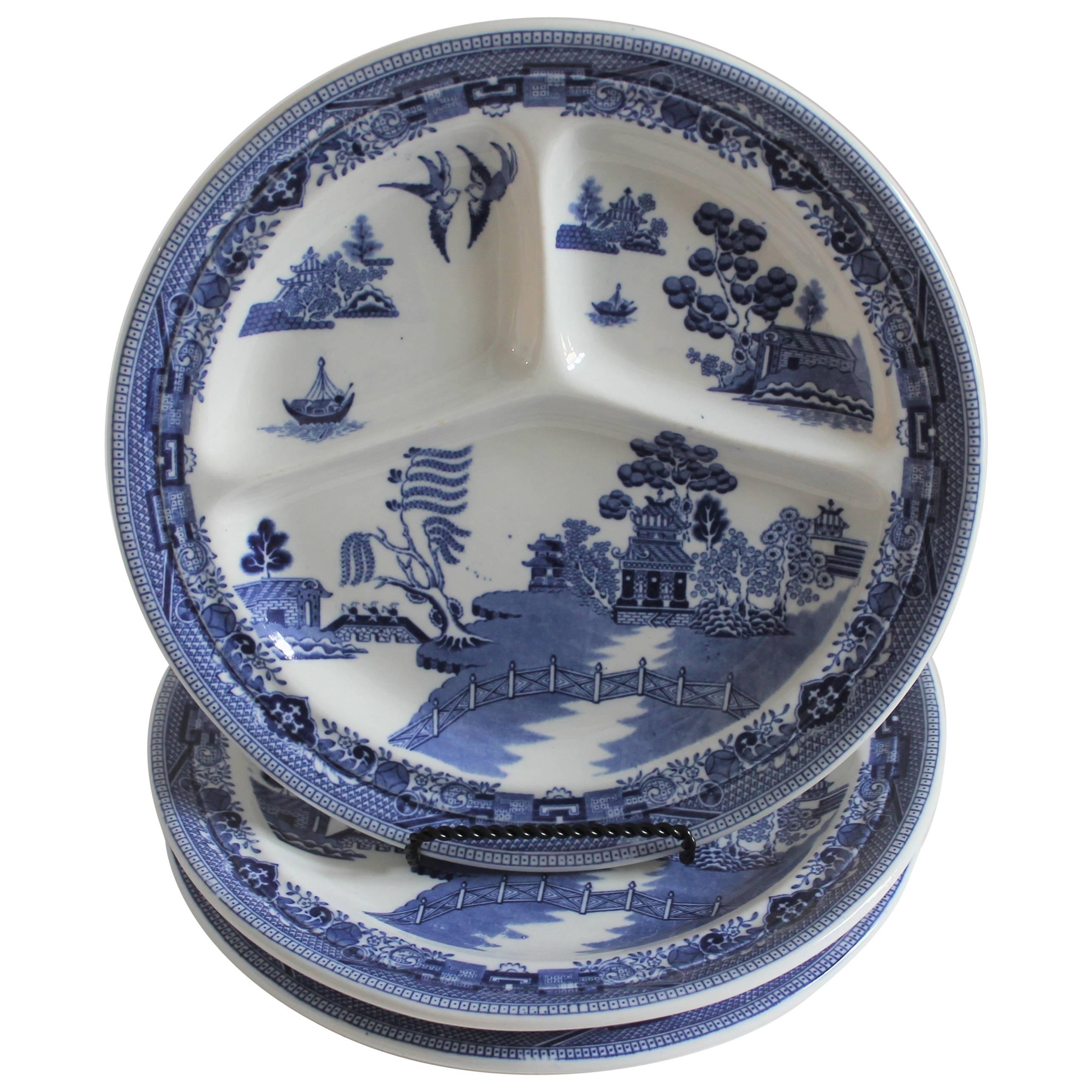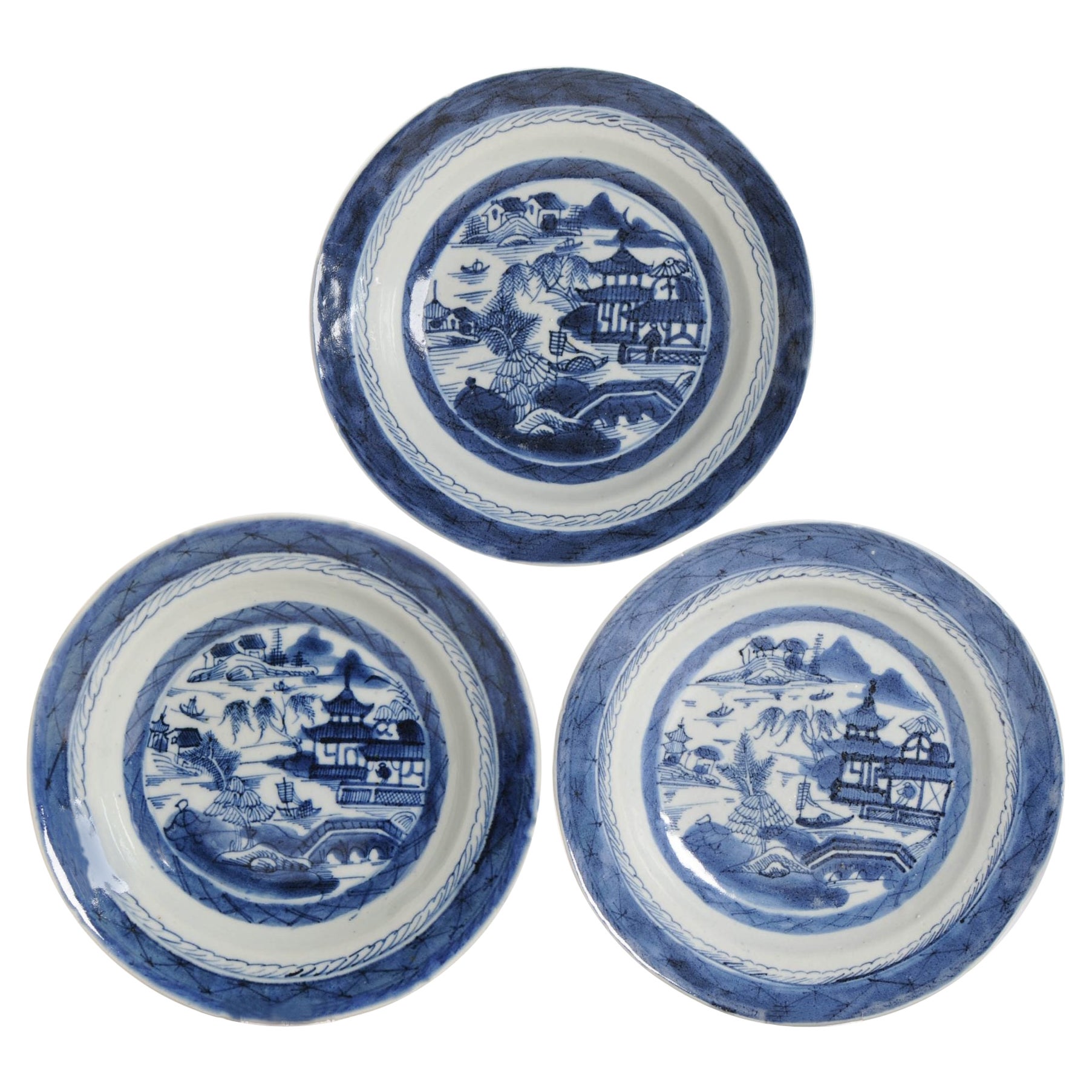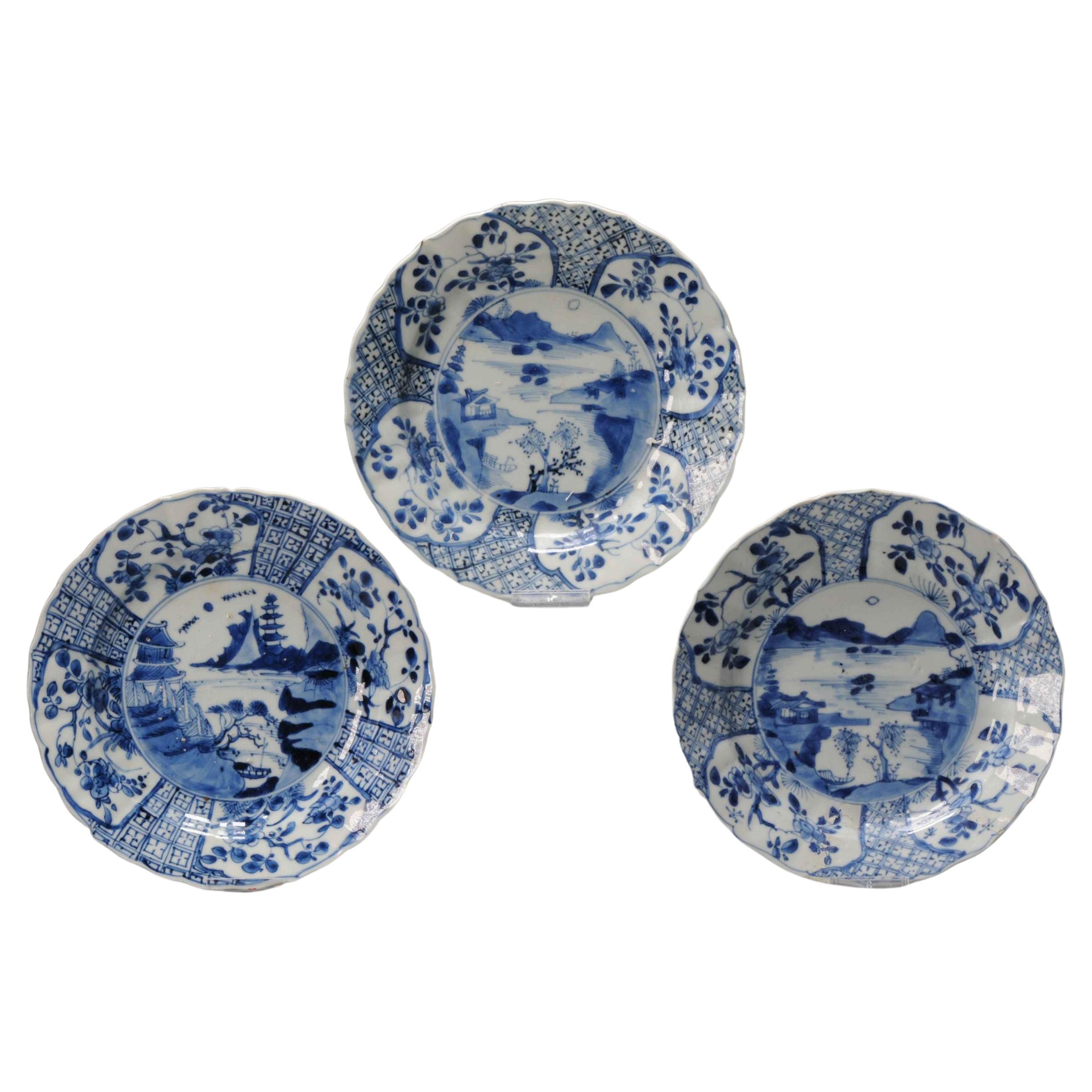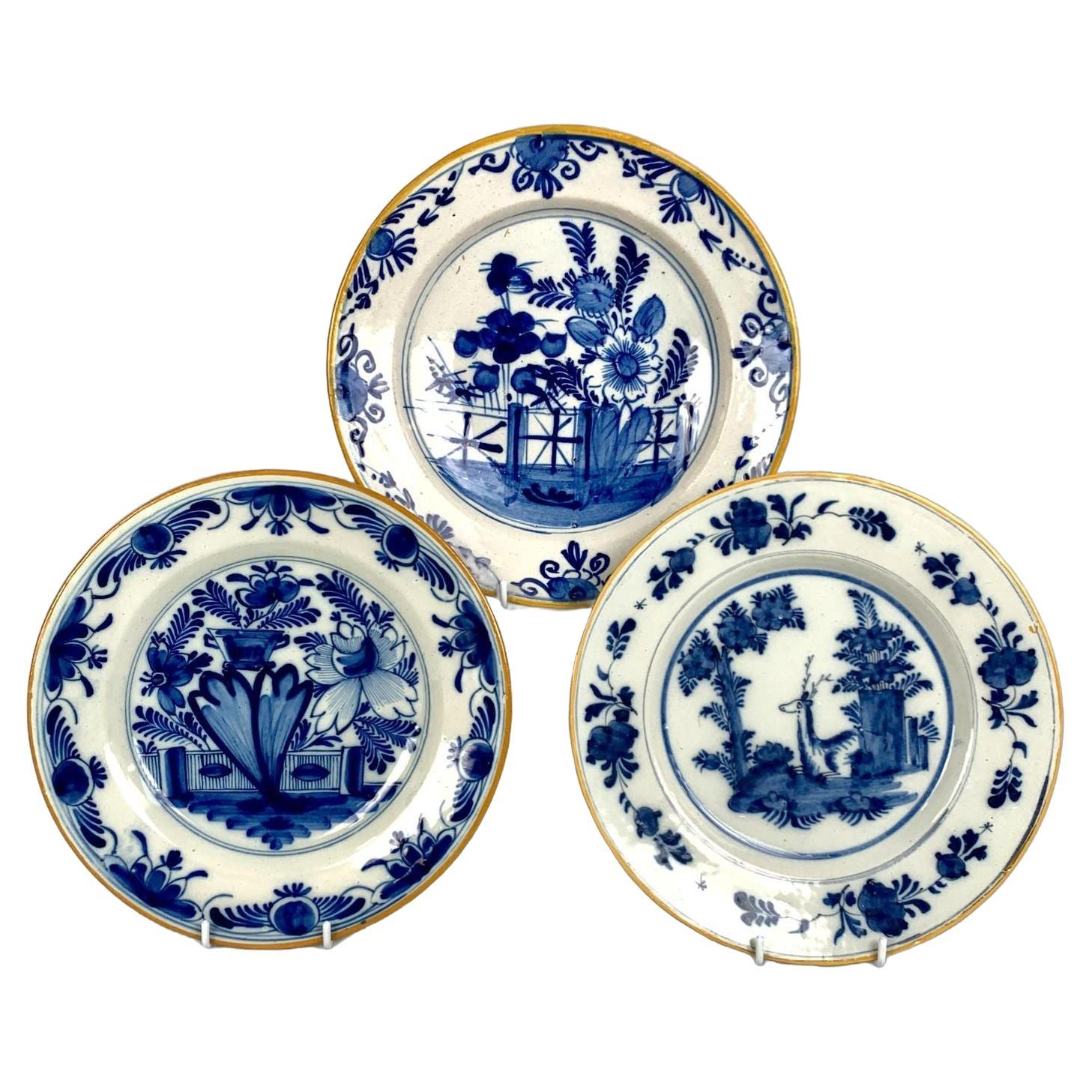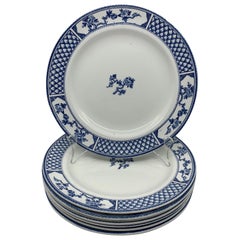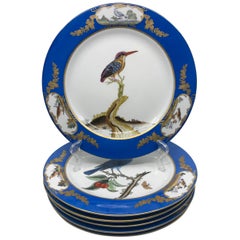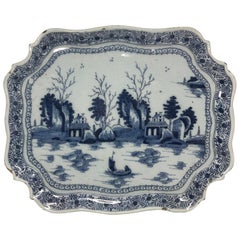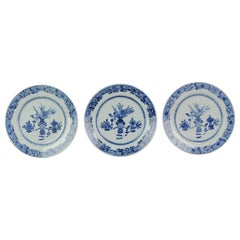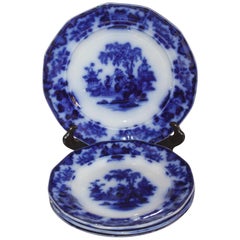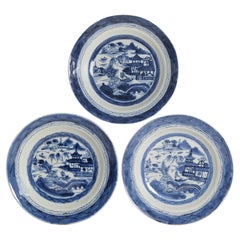Items Similar to Set of Three Large Blue and White Copeland Indian Tree Plates
Want more images or videos?
Request additional images or videos from the seller
1 of 6
Set of Three Large Blue and White Copeland Indian Tree Plates
$150per set
£113.30per set
€130.94per set
CA$210.40per set
A$234.02per set
CHF 122.48per set
MX$2,854.23per set
NOK 1,539per set
SEK 1,447.62per set
DKK 977.32per set
About the Item
Set of three large blue and white Copeland Indian tree plates. Set of three, in unusual blue and white model of this pattern in a hard
glaze durable china made for the Middle Eastern market. Back is impress marked for Copeland with "T80" for 1880 and
Middle Eastern/Indian lettering in underglaze blue, England, 1880.
Measures: 10.25" D x 1" H.
- Creator:Copeland (Maker)
- Dimensions:Height: 1 in (2.54 cm)Diameter: 10.25 in (26.04 cm)
- Sold As:Set of 3
- Materials and Techniques:
- Place of Origin:
- Period:
- Date of Manufacture:circa 1880
- Condition:Wear consistent with age and use. no visible signs of wear; excellent antique condition for plates.
- Seller Location:New York, NY
- Reference Number:1stDibs: LU108424224853
About the Seller
4.9
Platinum Seller
Premium sellers with a 4.7+ rating and 24-hour response times
Established in 1993
1stDibs seller since 2014
592 sales on 1stDibs
Typical response time: <1 hour
- ShippingRetrieving quote...Shipping from: New York, NY
- Return Policy
Authenticity Guarantee
In the unlikely event there’s an issue with an item’s authenticity, contact us within 1 year for a full refund. DetailsMoney-Back Guarantee
If your item is not as described, is damaged in transit, or does not arrive, contact us within 7 days for a full refund. Details24-Hour Cancellation
You have a 24-hour grace period in which to reconsider your purchase, with no questions asked.Vetted Professional Sellers
Our world-class sellers must adhere to strict standards for service and quality, maintaining the integrity of our listings.Price-Match Guarantee
If you find that a seller listed the same item for a lower price elsewhere, we’ll match it.Trusted Global Delivery
Our best-in-class carrier network provides specialized shipping options worldwide, including custom delivery.More From This Seller
View AllSet of Eight Blue and White Exeter Plates
By Johnson Brothers
Located in New York, NY
Set of eight of blue and white Exeter plates. Eight white English plates with blue lattice border in between floral reserves centering on one cherry blossom sprig. Classic and handsome blue and white plates. Markings "The Exeter" for "Johnson Bros England...
Category
Early 20th Century English Dinner Plates
Materials
Ceramic
$1,250 / set
English Blue and White Chinoiserie Plate
By Davenport Porcelain
Located in New York, NY
English blue and white chinoiserie plate. Davenport Staffordshire oval plate in the "Chinoiserie Ruins" pattern with reticulated ...
Category
Antique Early 19th Century English Chinoiserie Serving Pieces
Set of Six Blue and White Bird Plates
Located in New York, NY
Set of six blue and white bird plates. Set of six 20th century Sèvres style gilt and painted dinner plates with blue banded and gilt borders...
Category
Late 20th Century European Dinner Plates
Materials
Porcelain
$900 / set
Blue and White Dutch Chinoiserie Platter
By Delampetkan Factory
Located in New York, NY
Blue and white Dutch chinoiserie platter. Antique Dutch platter in chinoiserie style with silver salver shaped border. Underglaze markings in blue "L...
Category
Antique Mid-18th Century Dutch Chinoiserie Platters and Serveware
Materials
Pottery
Set of Eight Blue and White Willow Basketweave Plates
By Cauldon
Located in New York, NY
Set of eight blue and white willow basket weave plates. Blue and white willow plates with wide white banded basketweave border plates with outer blue rim...
Category
Antique Late 19th Century English Dinner Plates
Materials
Pottery
$1,000 Sale Price / set
37% Off
English Blue and White Covered Dish
By Furnivals
Located in New York, NY
English blue and white covered dish. Blue and white covered dish for butter or cheese with markings for Furnivals Limited. England, early 20th Century
Di...
Category
Early 20th Century English Serving Pieces
Materials
Ceramic
You May Also Like
Set of 3 Antique Chinese Porcelain Blue White Dinner Plates, 18th Century
Located in Amsterdam, Noord Holland
A very nicely decorated set of 3 plates. Dating to circa 1720-1740
Additional information:
Material: Porcelain & Pottery
Region of Origin: China
Period: 18th century Qing (1661 - 19...
Category
Antique 18th Century Chinese Decorative Dishes and Vide-Poche
Materials
Porcelain
$942 Sale Price / set
20% Off
19th Century Flo-Blue "Scinde" Pattern Luncheon Plates, 4 Pieces
Located in Los Angeles, CA
These flo blue plates are in such nice condition. One small plate has minor edge chip. Selling the collection of four plates.
Large plate measures 9.5...
Category
Antique 19th Century American Country Platters and Serveware
Materials
Porcelain
$716 Sale Price / set
20% Off
Set of Three Early 20th Century Blue Willow Separating Restaurant Plates
By Buffalo Pottery
Located in Los Angeles, CA
Beautiful separating restaurant blue willow plates are marked Buffalo China BOA. This restaurant china is in great condition. This set is dishwasher...
Category
Antique 19th Century American Country Dinner Plates
Materials
Pottery
$396 Sale Price / set
20% Off
Set of 3 Antique Chinese Porcelain Kangxi/Yongzheng Blue White Dinner Plates 18C
Located in Amsterdam, Noord Holland
A very nicely decorated SET of 3 dishes from the 18th century.
landscape scene.
Additional information:
Material: Porcelain & Pottery
Region of Origin: China
Period: 18th century
Ch...
Category
Antique 18th Century Chinese Qing Dinner Plates
Materials
Porcelain
$813 Sale Price / set
20% Off
Set of 3 Kangxi Period Chinese Porcelain Landscape Blue White Plates
Located in Amsterdam, Noord Holland
An absolute top quality large Kangxi cobalt blue dishes, all with similar landscape scenes and moulded in a nice shape. These dishes tend toward the...
Category
Antique 17th Century Chinese Dinner Plates
Materials
Porcelain
$1,758 Sale Price / set
20% Off
Set of 3 Antique Blue and White Delft Plates Hand Painted Netherlands Ca. 1800
By Delft
Located in Katonah, NY
This set of three antique Delft plates was hand-painted in the Netherlands circa 1800.
Each plate measures approximately 9 inches in diameter and ...
Category
Antique Early 19th Century Dutch Folk Art Decorative Dishes and Vide-Poche
Materials
Delft
More Ways To Browse
Indian Tree
Large Chinese Plates
Large Blue And White Plates
Chinese Glass Tree
Middle Eastern Silver
Middle Eastern Glass
Antique Copeland
19th Century Dinner China
Indian Tree Plates
Middle Eastern Plate
Copeland China
Copeland China England
Copeland China Plates
Indian Tree Pattern Dinner Plates
Majolica Artichoke Plate
Piatti Vintage
Set 8 Floral Dinner Plates
Wedgwood Green Plates
